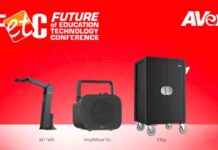As the academic year kicks off, districts across the country are facing tough financial decisions. The aftermath of dwindling reserves and the end of stimulus funds has left superintendents with the daunting task of determining where to cut costs without compromising the quality of education. This predicament is all too familiar to Dr. James Lane, who has navigated the budgetary challenges as a district superintendent in Virginia before assuming his role as the superintendent of public instruction for the state.
Reflecting on his experiences, Dr. Lane emphasizes the importance of evaluating the utilization of educational technology in classrooms. While the instinct may be to measure the value of edtech based on how frequently it is used, this approach can be misleading. In reality, the impact of digital resources on student learning transcends mere quantity.
Teachers who adeptly incorporate digital tools into their lessons understand the power of brief yet impactful interactions with technology. Whether it’s a captivating video on geological formations or an animated explanation of a physics concept, these supplemental resources play a crucial role in engaging students and reinforcing key concepts. Dr. Lane likens these digital enhancements to adding protein powder to a morning smoothie – they enrich the learning experience and contribute to long-term educational growth.
Research supports the efficacy of supplemental content in boosting student achievement. Studies conducted across multiple states have demonstrated significant improvements in Math, English Language Arts, and Science scores among students who have access to high-quality digital resources. Moreover, data validated by LearnPlatform reveals a substantial increase in literacy skill proficiency through targeted interventions.
Amidst the influx of edtech solutions flooding the market, educators are advised to adhere to best practices when selecting supplemental materials. Recommendations from the Minnesota Educational Computing Consortium emphasize the importance of incorporating historically accurate information, seamless integration of learning into interactive content, and providing teachers with adequate support for implementation. Ultimately, the key to effective edtech integration lies in making learning enjoyable and relevant to students.
Great teachers understand the nuances of blending digital resources into their teaching practices to spark engagement and foster meaningful learning experiences. They recognize that even the smallest moments in the classroom can ignite curiosity and drive academic growth. As the upcoming budget season looms and district leaders grapple with tough decisions, it is essential to remember that the value of edtech transcends mere time spent using it – the outcomes are what truly matter.
In the words of Dr. James Lane, the CEO of PDK International and Educators Rising, the true measure of educational technology lies in its ability to enhance student learning outcomes and enrich the educational experience. So, as educators and administrators navigate the complexities of budgetary constraints and technological advancements, let us remember that quality trumps quantity when it comes to integrating edtech into the classroom. After all, in the realm of education, it’s the impact that truly matters.







